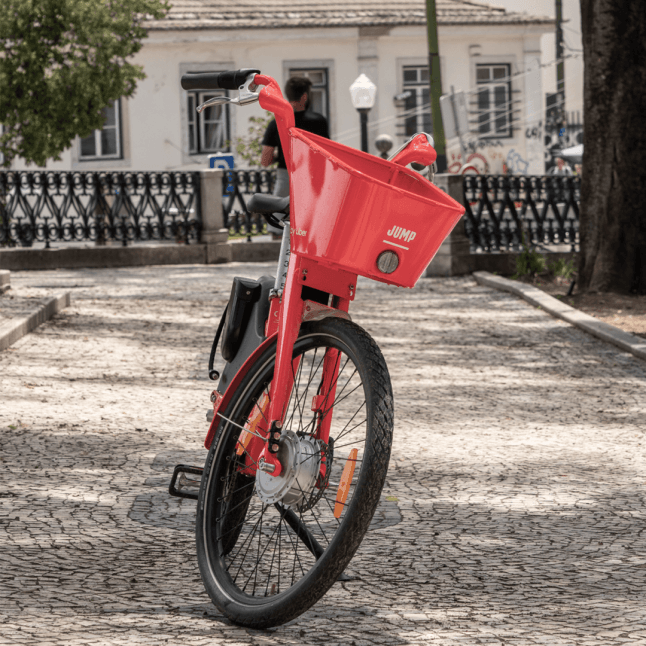
A fairer solution
Transport experts and commentators – myself included – have been focused on what business does vs. what governments do, but are we overlooking the role that community plays in the transition to a new mobility future?
As the government looks to enable more partnering with private enterprise to deliver transport services, should it also be enabling community groups to co-operate and share their own assets?
I was heartened by the example of the Hobsonville community, that has been, to help fund the trial of a weekend ferry service.

In the Hobsonville example, we’re seeing a powerful disruptor emerge, one that puts the customer at the very centre of mobility decisions.
We have the first examples of apartment buildings with no provision for car parks, which heralds a new approach for New Zealand. In some cases, the developer has purchased a pool car to be shared by the residents, arguing that this should reduce the number of car parks required.
This is fine in theory, but often falls over in practice – especially if you’re the resident that is stranded at the weekend in your car-free development. A better model would see a body corporate purchase personal transport options based on the needs of their residents. This could be a mix of pool cars, electric bikes, road bikes and scooters, with a guaranteed ride or insurance system to get people to places if they do get stranded.
“And this is the rub: the companies that currently operate in the shared mobility space are working for their investors and for profit. Yes, many have plans for people on low incomes but, realistically, providing equity and fair access isn’t as profitable as serving richer communities that use their services more.”



FULL INSIGHTS
This is a condensed version of our insights. Download the full version with additional research and materials.
Download


Technical Director – Transport
Louise is a technical leader with a strategic focus on transport advisory, smart mobility and transport planning. Louise enjoys the challenge of considering how technology can help achieve policy goals and how transport systems can be changed in ways that improve the livability of cities and towns.
Louise Baker


Back to main

If we bring these things together and involve the right people at a ‘hyper-local’ level to develop mobility as a co-operative, we stand to set ourselves up to create a mobility system that is based on pooling our assets, works to serve its users as opposed to one that is driven to maximise profits and benefit overseas shareholders.



There are three models or technologies that we can draw on to enable ‘mobility as a co-op’:
Technologies that make it possible
The forerunners of the larger carshare systems could be revisited as a model for communities.
Car clubs or street fleets
We already have technologies at our disposal that would enable mobility as a co-op for example, there are data standards like Google Bikeshare Feed Specification that could theoretically enable local bikeshare to be established by groups of businesses offering local bicycle for hire.
Data specifications
Peer-to-peer sharing services and enabling apps such as Spinlister, Your Drive, and My Car Your Rental allow us to share what we have.
Peer-to-peer sharing
While services such as Jump, Lime, Flamingo, Ola, and Uber are familiar names, they still require a smartphone and online banking facilities or a credit card to use.
Thoughtful design is needed to ensure accessibility and affordability for all ages, genders, incomes, and abilities. Yet the real potential for shared transport is in reducing household travel costs, lowering emissions, and easing congestion across the network.
And this is the rub: the companies that currently operate in the shared mobility space are working for their investors and for profit. Yes, many have plans for people on low incomes, but realistically, providing equity and fair access isn’t as profitable as serving richer communities that use their services more.
By: Louise Baker
It’s clear from the way users have embraced initiatives such as e-bike and e-scooter sharing schemes that there’s considerable appetite for a future that is built on shared and active mobility. While this will be a powerful tool in the move to get people out of private vehicles, Louise Baker, WSP Technical Director Transport, explores the role of equity in accessing these services.
Back to main

Back to top

PART 2
Equity in shared mobility


Back to main



Technical Director – Transport
Louise is a technical leader with a strategic focus on transport advisory, smart mobility and transport planning. Louise enjoys the challenge of considering how technology can help achieve policy goals and how transport systems can be changed in ways that improve the livability of cities and towns.
Louise Baker


FULL INSIGHTS
This is a condensed version of our insights. Download the full version with additional research and materials.
Download
If we bring these things together and involve the right people at a ‘hyper-local’ level to develop mobility as a co-operative, we stand to set ourselves up to create a mobility system that is based on pooling our assets, works to serve its users as opposed to one that is driven to maximise profits and benefit overseas shareholders.



We already have technologies at our disposal that would enable mobility as a co-op for example, there are data standards like Google Bikeshare Feed Specification that could theoretically enable local bikeshare to be established by groups of businesses offering local bicycle for hire.
Data specifications
Peer-to-peer sharing services and enabling apps such as Spinlister, Your Drive, and My Car Your Rental allow us to share what we have.
Peer-to-peer sharing
The forerunners of the larger carshare systems could be revisited as a model for communities.
Car clubs or street fleets
There are three models or technologies that we can draw on to enable ‘mobility as a co-op’:
Technologies that make it possible
In the Hobsonville example, we’re seeing a powerful disruptor emerge, one that puts the customer at the very centre of mobility decisions.
We have the first examples of apartment buildings with no provision for car parks, which heralds a new approach for New Zealand. In some cases, the developer has purchased a pool car to be shared by the residents, arguing that this should reduce the number of car parks required.
This is fine in theory, but often falls over in practice – especially if you’re the resident that is stranded at the weekend in your car-free development. A better model would see a body corporate purchase personal transport options based on the needs of their residents. This could be a mix of pool cars, electric bikes, road bikes and scooters, with a guaranteed ride or insurance system to get people to places if they do get stranded.

A fairer solution
Transport experts and commentators – myself included – have been focused on what business does vs. what governments do, but are we overlooking the role that community plays in the transition to a new mobility future?
As the government looks to enable more partnering with private enterprise to deliver transport services, should it also be enabling community groups to co-operate and share their own assets?
I was heartened by the example of the Hobsonville community, that has been, to help fund the trial of a weekend ferry service.

“And this is the rub: the companies that currently operate in the shared mobility space are working for their investors and for profit. Yes, many have plans for people on low incomes but, realistically, providing equity and fair access isn’t as profitable as serving richer communities that use their services more.”


While services such as Jump, Lime, Flamingo, Ola, and Uber are familiar names, they still require a smartphone and online banking facilities or a credit card to use.
Thoughtful design is needed to ensure accessibility and affordability for all ages, genders, incomes, and abilities. Yet the real potential for shared transport is in reducing household travel costs, lowering emissions, and easing congestion across the network.
And this is the rub: the companies that currently operate in the shared mobility space are working for their investors and for profit. Yes, many have plans for people on low incomes, but realistically, providing equity and fair access isn’t as profitable as serving richer communities that use their services more.
By: Louise Baker
It’s clear from the way users have embraced initiatives such as e-bike and e-scooter sharing schemes that there’s considerable appetite for a future that is built on shared and active mobility. While this will be a powerful tool in the move to get people out of private vehicles, Louise Baker, WSP Technical Director Transport, explores the role of equity in accessing these services.
Equity in shared mobility
PART 2
